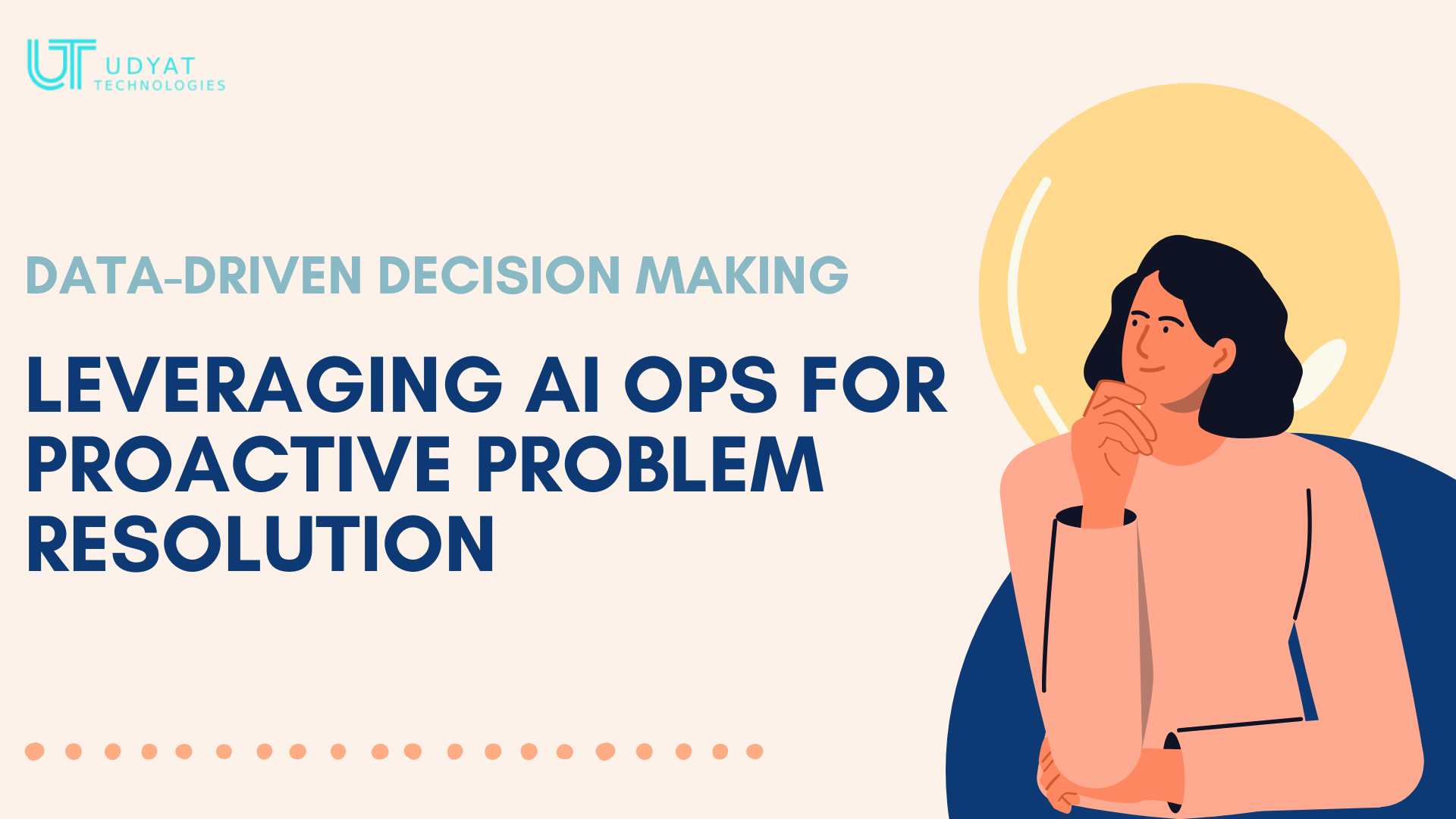Data-Driven Decision Making: Leveraging AIOps for Proactive Problem Resolution
In today's fast-paced digital landscape, businesses rely heavily on data to make informed decisions. AIOps (Artificial Intelligence for IT Operations) has become a game-changer, allowing organizations to leverage data for proactive problem resolution. Here's how AIOps supports data-driven decision-making and why it's essential for modern IT environments.
1. Understanding AIOps and Data-Driven Decision Making
- Defining AIOps: AIOps combines artificial intelligence and machine learning with big data to automate and enhance IT operations.
- Data-Driven Decision Making: This approach uses data analysis to guide decisions, reducing reliance on intuition alone.
- The Role of AIOps in Decision-Making: AIOps can process massive amounts of data in real-time, making it invaluable for timely and accurate decisions.
2. How AIOps Enhances Proactive Problem Resolution
- Real-Time Data Analysis: AIOps tools analyze real-time data, allowing organizations to detect anomalies before they escalate into issues.
- Predictive Insights: By identifying patterns and trends, AIOps helps predict potential problems, enabling IT teams to address them proactively.
- Automated Root Cause Analysis: With AIOps, organizations can quickly pinpoint the root causes of issues, speeding up resolution times and reducing downtime.
3. Benefits of Leveraging AIOps for Data-Driven Decision Making
- Increased Efficiency: Automated processes reduce the workload on IT teams, allowing them to focus on strategic tasks.
- Cost Savings: Proactive problem resolution minimizes disruptions, saving costs associated with downtime and lost productivity.
- Improved Customer Experience: By maintaining system stability and performance, AIOps helps ensure a better user experience.
- Enhanced Decision Quality: Data-driven insights from AIOps lead to more accurate and effective decision-making.
4. Implementing AIOps for Effective Problem Resolution
- Identify Key Data Sources: Determine which data sources (e.g., logs, metrics, traces) are critical for your organization's operations.
- Integrate AIOps Tools: Select AIOps tools that align with your IT infrastructure and can effectively process your data.
- Monitor and Adjust: Regularly monitor the performance of your AIOps tools and adjust as necessary to ensure optimal problem resolution.
- Train Your Team: Equip your IT team with the necessary skills to use AIOps tools effectively and interpret the insights they provide.
5. Overcoming Challenges in AIOps Adoption
- Data Quality and Integration: Ensure high-quality, integrated data to maximize the effectiveness of AIOps.
- Change Management: Encourage a culture of change, as AIOps adoption may require shifts in traditional IT workflows.
- Security and Compliance: Establish protocols to secure data and comply with regulations when implementing AIOps solutions.
6. Future Trends in AIOps and Data-Driven Decision Making
- Greater AI and ML Integration: AI advancements will continue to make AIOps tools more powerful, predictive, and precise.
- Increased Focus on End-to-End Visibility: AIOps will expand to provide comprehensive visibility across all IT operations, enhancing decision-making.
- AIOps for Cross-Functional Collaboration: The trend toward DevSecOps will likely integrate AIOps, promoting collaboration among IT, development, and security teams.
Conclusion
By integrating AIOps into your IT operations, you can harness the power of data-driven decision-making for proactive problem resolution. This approach not only enhances operational efficiency but also supports the overall growth and resilience of your organization.

